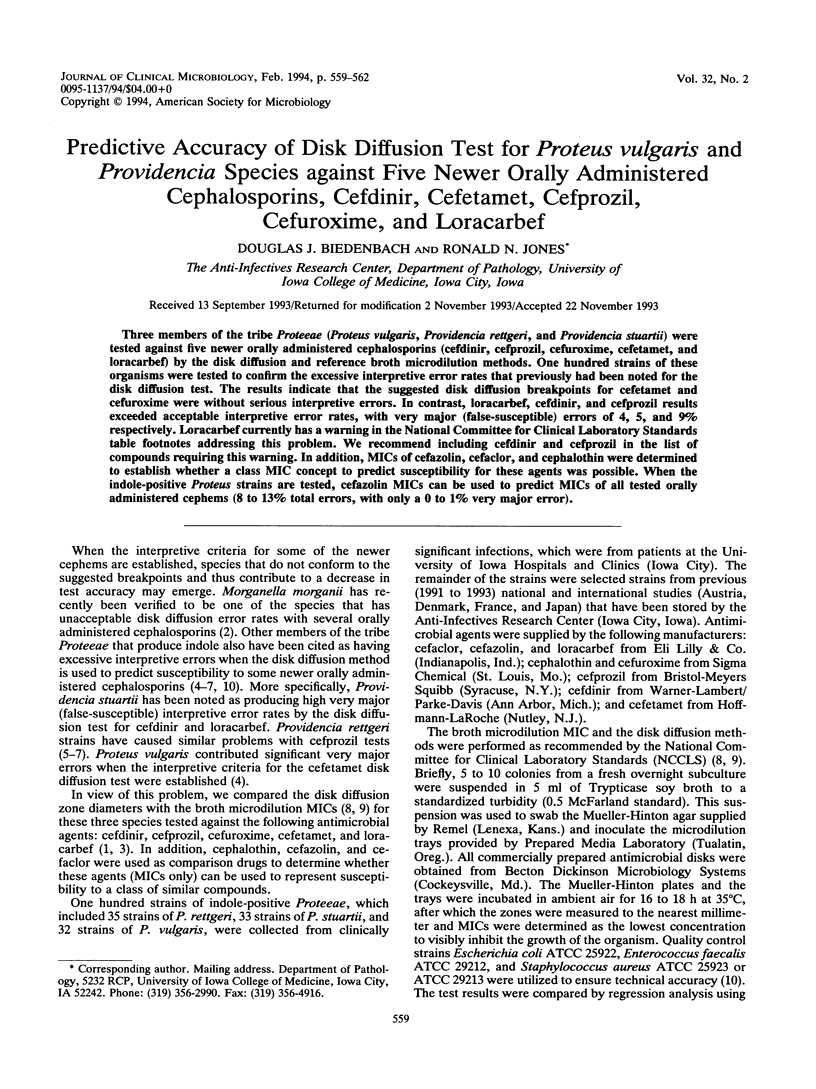Predictive accuracy of disk diffusion test for Proteus vulgaris and Providencia species against five newer orally administered cephalosporins, cefdinir, cefetamet, cefprozil, cefuroxime, and loracarbef (original) (raw)
Abstract
Three members of the tribe Proteeae (Proteus vulgaris, Providencia rettgeri, and Providencia stuartii) were tested against five newer orally administered cephalosporins (cefdinir, cefprozil, cefuroxime, cefetamet, and loracarbef) by the disk diffusion and reference broth microdilution methods. One hundred strains of these organisms were tested to confirm the excessive interpretive error rates that previously had been noted for the disk diffusion test. The results indicate that the suggested disk diffusion breakpoints for cefetamet and cefuroxime were without serious interpretive errors. In contrast, loracarbef, cefdinir, and cefprozil results exceeded acceptable interpretive error rates, with very major (false-susceptible) errors of 4, 5, and 9% respectively. Loracarbef currently has a warning in the National Committee for Clinical Laboratory Standards table footnotes addressing this problem. We recommend including cefdinir and cefprozil in the list of compounds requiring this warning. In addition, MICs of cefazolin, cefaclor, and cephalothin were determined to establish whether a class MIC concept to predict susceptibility for these agents was possible. When the indole-positive Proteus strains are tested, cefazolin MICs can be used to predict MICs of all tested orally administered cephems (8 to 13% total errors, with only a 0 to 1% very major error.

Selected References
These references are in PubMed. This may not be the complete list of references from this article.
- Barry A. L., Jones R. N., Thornsberry C. Cefuroxime, cefamandole, cefoxitin, and cephalothin in vitro susceptibility tests: reassessment of the "class representative" concept, confirmation of disk interpretive criteria, and proposed quality control guidelines. Am J Clin Pathol. 1983 Aug;80(2):182–189. doi: 10.1093/ajcp/80.2.182. [DOI] [PubMed] [Google Scholar]
- Biedenbach D. J., Jones R. N., Erwin M. E. Interpretive accuracy of the disk diffusion method for testing newer orally administered cephalosporins against Morganella morganii. J Clin Microbiol. 1993 Oct;31(10):2828–2830. doi: 10.1128/jcm.31.10.2828-2830.1993. [DOI] [PMC free article] [PubMed] [Google Scholar]
- Jones R. N., Barry A. L. Disk diffusion susceptibility testing and broth microdilution quality control guidelines for BMY-28100, a new orally administered cephalosporin. J Clin Microbiol. 1987 Nov;25(11):2211–2213. doi: 10.1128/jcm.25.11.2211-2213.1987. [DOI] [PMC free article] [PubMed] [Google Scholar]
- Jones R. N., Barry A. L. Disk diffusion susceptibility testing for LY163892 (KT-3777), a new orally administered 1-carbacephem. J Clin Microbiol. 1988 Apr;26(4):770–773. doi: 10.1128/jcm.26.4.770-773.1988. [DOI] [PMC free article] [PubMed] [Google Scholar]
- Jones R. N., Barry A. L. Preliminary antimicrobial susceptibility interpretive criteria for cefetamet (Ro 15-8074) and cefteram (Ro 19-5247) disk tests. J Clin Microbiol. 1987 Sep;25(9):1796–1799. doi: 10.1128/jcm.25.9.1796-1799.1987. [DOI] [PMC free article] [PubMed] [Google Scholar]